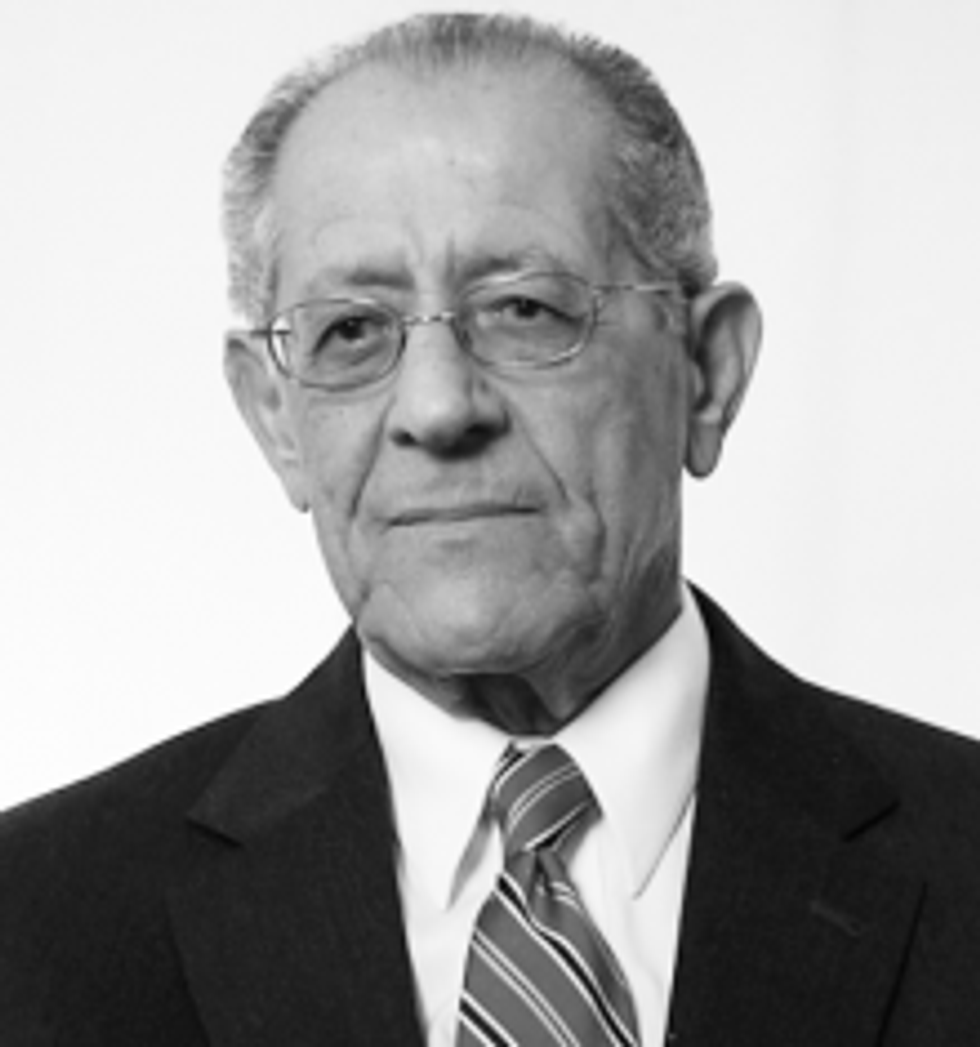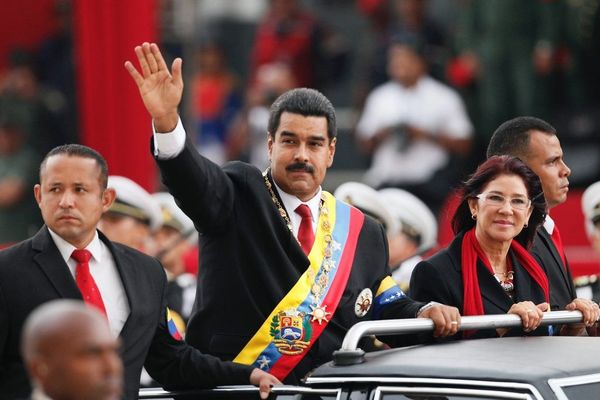ISIS has claimed responsibility for a series of Easter Sunday bombings in Sri Lanka that killed more than 300 people and injured 500 more. A government official said an early investigation indicated the attacks could have been carried out in retaliation for a terrorist attack at two mosques last month in Christchurch, New Zealand.
The claim from ISIS comes on the heels of an attack in Kabul on Sunday, a claim of responsibility for a first-time attack in the Democratic Republic of Congo and news of a foiled attack in Saudi Arabia.
Bottom Line: The Islamic State, also known as the Islamic State of Iraq and al-Sham (ISIS), has experienced significant territorial losses in its former self-declared caliphate that once spanned large swaths of eastern Syria and western Iraq. However, the group remains a potent international threat as it increasingly adopts conventional insurgent tactics, increases its focus on executing terrorist attacks in the West and doubles down on supporting affiliate organizations across the globe as well as lone wolf actors pursuing inspired attacks in their home countries.
Background: ISIS is the third reincarnation of al-Qaida in Iraq, a group that was originally formed in the aftermath of the Iraq War in 2004 and later changed its name to the Islamic State of Iraq (ISI) in 2006.
- ISIS was expelled from the al-Qaida network in February 2014 after the group’s leader Abu Bakr al-Baghdadi announced the merger of ISIS and al-Qaida’s Syrian affiliate, the Al-Nusra Front, under his leadership – a move that was rejected by both al-Qaida emir Ayman al-Zawahiri and Al-Nusra Front leader Abu-Muhammad al Joulani. Al-Baghdadi and al-Zawahiri also failed to see eye-to-eye on several other issues, such as ISIS’s brutality particularly towards other Muslims.
- In Iraq, ISIS expediently gained traction in late 2013 through mid-2014, as Sunnis there felt increasingly disenfranchised by a Shia-dominated government based in Baghdad that had instituted what they saw as sectarian policies. Facing little resistance from a battered Iraqi army, ISIS swiftly conquered significant territory in eastern Syria and western Iraq, including Iraq’s second largest city of Mosul. In June 2014, al-Baghdadi announced the establishment of an Islamic caliphate from Mosul’s Grand Mosque. At its peak, ISIS governed approximately 7.7 million people and controlled roughly 40,000 square miles of land, essentially forming a proto-state as large as the United Kingdom.
- ISIS’s ideology can be divided into three main components: First is the group’s Salafi interpretation of Islam, which originates from the Arabic word salaf, meaning ancestor, and refers to a version of Islam practiced by the Prophet Muhammad and the earliest generations of Muslims in the seventh century. ISIS subscribes to a brand of Salafism that licenses violence against all those who do not share their religious credence, including fellow Muslims. Second, ISIS insists that Sharia law play an essential role in the group’s political system, with al-Baghdadi assuming the role of political leader and religious authority. Third, ISIS strongly advocates for an apocalyptic vision of a global jihad in which the Muslim world battles the West to achieve global dominion; only by participating in jihad against the West will Muslim lands be saved, an Islamic caliphate created and the world reach its phase of final salvation.
- During its peak earning period from mid-2014 through the end of 2015, ISIS was grossing between $1-3 million per day in November 2014 and as much as $80 million per month by the end of 2015. It generated the bulk of its revenue via illegal oil sales, which brought in nearly $40 million per month, while also relying on antiquities sales, the extortion and taxation of local populations and kidnappings for ransom.
- Since the U.S. initiated military operations against ISIS targets in August 2014, ISIS’s core in Syria and Iraq has lost approximately 98 percent of the territory it once controlled, including its former Syrian capital of Raqqa and Mosul. An estimated 3,000 fighters remain in the area, down significantly from the more than 60,000 militants that fought for the group in Syria and Iraq, including approximately 40,000 foreign fighters originating from over 110 countries. Territorial losses, coupled with precision strikes on ISIS financial hubs, have also depleted the group’s revenue streams, although ISIS’s exploitation of oil still brings in roughly $4 million per month and it has turned to other sources of income, namely black-market antiquities trading, to offset the losses incurred by its oil industry.
- In September 2016, ISIS's founder and leader, Abu Bakr al-Baghdadi, told foreign fighters to avoid coming to the rapidly eroding caliphate but instead to migrate to one of the organization’s branches.
- The 2018 National Strategy for Counterterrorism, warned that, “The group's global reach remains robust, with eight official branches and more than two dozen networks regularly conducting terrorist and insurgent operations across Africa, Asia, Europe, and the Middle East.”
- According to some estimates, as many as 30,000 of the 40,000 foreign fighters from 120 plus countries who came to fight with ISIS in its caliphate between 2014-2016 may have survived the international coalition's sustained military operations against the group—thus ensuring a continuing hardcore of seasoned combatants, now deployed to other theaters.
WHAT IS THE CURRENT STATE OF ISIS?
Emile Nakhleh, Former member, CIA's Senior Intelligence Service
"ISIS has moved from the local to the global. As it lost its geographic caliphate in Syria and Iraq, ISIS is now focusing on spreading its virtual caliphate in other parts of the world. It has also moved from a unitary overarching caliphate into a series of local provinces or "Welayat." In doing so, ISIS is using existing Islamist and terrorist groups, whether in Central Africa, in the Sahel countries, in Afghanistan and South Asia, and in Indonesia, the Philippines and other part of Southeast Asia. Additionally, I expect ISIS to rear its ugly head in Central Asia, especially in Uzbekistan and the Fergana Valley, and in the Balkans. The moral of the story: Depriving ISIS of its geographic safe haven does NOT mean the end of its ideology. It would not be surprising if the Sri Lankan investigators discover an ISIS involvement in the Easter church and hotel bombings through the local Islamist group, the National Thowheeth Jama'ath (National Tawheed Jama'a)."
Bruce Hoffman, Professor, Georgetown University
"ISIS suffered grievous setbacks in Western Iraq and Syria. But severely damaging a terrorist group is not the same as undermining its ideology or destroying its raison d'être. Revenge and retaliation for the lost caliphate has now infused ISIS with new-found purpose and energy."
DOES AN ATTACK IN KABUL SUGGEST COOPERATION WITH THE TALIBAN?
Emile Nakhleh, Former member, CIA's Senior Intelligence Service
"The Kabul attack could signal collaboration with BOTH the Taliban and al-Qa'ida. Although there might be tensions or conflicts between ISIS and al-Qa'ida, such conflicts are mostly over turf and local control, not over ideology. They might also disagree over the process, timing, and modalities of establishing a local Islamist welaya, but not over the ultimate goal of defeating their perceived enemies and setting up an Islamist order."
WHY IS ISIS CLAIMING RESPONSIBILITY FOR ITS FIRST ATTACK IN DRC (SUGGESTING THERE WILL BE MORE)? WHAT IS THE STRATEGIC BENEFIT FOR ISIS IN DRC?
Bruce Hoffman, Professor, Georgetown University
"ISIS's focus has shifted, as the U.S. counterterrorism strategy notes, from the center (the fallen caliphate) to its far-flung branches and networks with the intention of spreading the ISIS brand further. In this critical respect, ISIS is unbowed by its battlefield defeats and the loss of its caliphate. Instead, as ISIS's recent appearance in the Democratic Republic of the Congo demonstrates, the group's continued vitality and intention to opportunistically continue to prosecute its terrorist campaigns and expansion of its malignant ideology to whatever venues are available is evident."
Emile Nakhleh, Former member, CIA's Senior Intelligence Service
"In the past year, ISIS has worked feverishly through local Islamist affiliates to expand its influence and presence in Sub-Saharan Africa. The Congo is a logical location for ISIS to set up a province or welayat on the African continent beyond the North and Sahel regions. Such a process would not necessarily cost ISIS much money. In fact, they could use money movers from other parts of Africa that have already been set up. Money "mules" in Kenya, Uganda, and Mali could be recruited for the task of spreading the ISIS ideology and operations in central Africa. I would worry about ISIS spreading its expanding into South Africa in the foreseeable future."
WHAT DO YOU ANTICIPATE WE WILL SEE FROM ISIS IN THE NEXT 6-12 MONTHS?
Bruce Hoffman, Professor, Georgetown University
"If the Sri Lanka attacks are conclusively linked to ISIS, then coupled with Sunday's foiled ISIS attack in Saudi Arabia and the successful one in Kabul, alongside ISIS's spread to the Congo, this concatenation of developments would indicate that ISIS is recovering from the setbacks it suffered in Syria, Iraq, and Libya in recent years to again become threatening—at least as an international terrorist movement with the capacity to synchronize strikes in multiple countries."
Emile Nakhleh, Former member, CIA's Senior Intelligence Service
"I anticipate more ISIS or ISIS-inspired attacks on soft targets across the Middle East, Africa, South- and Southeast Asia. Such targets could include churches, temples, Western-frequented hotels, sports arenas, and Western corporate offices. ISIS might have more operational freedom in Sub-Saharan Africa as the intel and security services in these countries are not as well-trained and well-financed as in other countries. I also anticipate more operational convergence between ISIS and al-Qa'ida and more ISIS coordination with local Islamist groups."
Read Bruce Hoffman’s column, ISIS’ Shifting Focus in The Cipher Brief
















